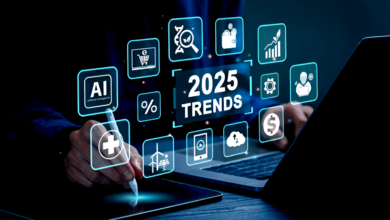Do You Trust Face ID Technology for Your Devices?

Face ID Technology, In today’s digital age, the security of our personal devices is of paramount importance. With the increasing use of biometric authentication methods, one question arises: Do you trust Face ID technology for your devices? Face ID, developed by Apple, is a revolutionary feature that allows users to unlock their devices and authenticate transactions using facial recognition technology. In this article, we will delve into the workings of Face ID, explore its advantages and concerns, compare it with other authentication methods, and discuss its role in our everyday lives.
In this digital era, where smartphones and other devices contain a wealth of personal information, ensuring the security of our devices is crucial. Face ID technology has emerged as a popular biometric authentication method that offers enhanced security and user convenience. Let’s take a closer look at how Face ID works and its benefits.
Read More: Is Your Technology Listening to You? 5 Best Points.
Understanding Face ID Technology
Face ID utilizes advanced facial recognition algorithms to create a detailed mathematical representation of a user’s face. This representation is stored securely in the device’s secure enclave, ensuring the privacy of the user’s biometric data. When the user attempts to unlock their device or authenticate a transaction, Face ID analyzes their facial features and matches them against the stored representation.

How Face ID Works
When a user sets up Face ID, the device captures and analyzes various facial landmarks, such as the distance between the eyes, shape of the nose, and contours of the face. These data points are used to create a unique facial map that is compared to the stored representation during the authentication process. This sophisticated technology allows for secure and reliable identification.
Advantages of Face ID Technology
Enhanced Security
Face ID offers a higher level of security compared to traditional authentication methods such as passwords or PINs. Facial recognition is unique to each individual, making it difficult for unauthorized users to gain access to the device. Additionally, Face ID incorporates depth sensing technology, making it resistant to spoofing attempts using photographs or masks.
Convenience and User Experience
One of the key advantages of Face ID is its convenience. Users can unlock their devices or authorize transactions simply by looking at the screen. This eliminates the need to remember complex passwords or input lengthy passcodes. Face ID provides a seamless and user-friendly experience, enhancing the overall usability of the device.
Accessibility Features
Face ID technology has proven to be a boon for individuals with disabilities. People with motor impairments or visual impairments can easily unlock their devices using facial recognition, eliminating the need for physical interactions or precise movements. This accessibility feature empowers a wider range of users to confidently utilize their devices.
Concerns and Potential Risks
While Face ID offers numerous benefits, it is essential to consider potential concerns and risks associated with this technology.
False Positive or Negative Identification
In rare cases, Face ID may encounter false positive or negative identification. Factors such as changes in appearance due to hairstyles, facial hair, or accessories may affect the accuracy of recognition. It is crucial for users to be aware of such limitations and have alternative authentication methods as backups.
Privacy and Data Security
Privacy and data security are paramount when it comes to biometric authentication. Face ID technology addresses these concerns by storing the facial map securely on the device itself, rather than on a remote server. This ensures that the biometric data remains within the user’s control, reducing the risk of unauthorized access.

Vulnerability to Spoofing
While Face ID technology is highly secure, there have been rare instances where individuals with similar facial features or close relatives have managed to bypass the system. This vulnerability, known as spoofing, highlights the need for ongoing advancements in biometric technology to further enhance security measures.
Face ID vs. Other Biometric Authentication Methods
Comparing Face ID with other biometric authentication methods provides valuable insights into its strengths and weaknesses.
Face ID vs. Touch ID
Face ID offers a more seamless and intuitive user experience compared to Touch ID, which relies on fingerprint recognition. Touch ID requires physical contact with the device, while Face ID provides contactless authentication, making it more convenient in various situations.
Face ID vs. Passwords
Face ID eliminates the need for remembering complex passwords and typing them in repeatedly. It provides a faster and more secure method of unlocking devices and authorizing transactions, reducing the chances of unauthorized access through stolen or weak passwords.
Face ID in Everyday Life
Face ID has become an integral part of our daily lives. Let’s explore how it is used in various scenarios:
Unlocking Your Device
With Face ID, unlocking your device is as simple as looking at it. The device quickly recognizes your face and grants you access to your personalized settings, apps, and data.
Secure Transactions
Face ID provides a secure authentication method for transactions. Whether you’re making a payment through a mobile wallet or authorizing a purchase in an app, the facial recognition technology ensures that only authorized individuals can carry out these transactions.
Third-Party App Integration
Many third-party apps now integrate Face ID as an authentication option. This adds an extra layer of security to sensitive information and ensures that only authorized users can access certain features or data within those apps.
Future Developments and Improvements
As technology continues to evolve, so will Face ID and other biometric authentication methods. Future developments may include even more accurate facial recognition, improved resistance to spoofing, and expanded use cases. The ongoing advancements in this field aim to provide users with enhanced security and a seamless user experience.

Face ID Technology, Conclusion
Face ID technology offers a secure, convenient, and user-friendly method of unlocking devices and authorizing transactions. While it has its limitations and potential risks, the benefits of Face ID, such as enhanced security, ease of use, and accessibility features, make it a compelling choice for many users. As technology advances, we can expect further improvements in biometric authentication methods, ensuring that our devices remain protected in the digital world.
Read More: Is There Some Technology or Device You Wish Hadn’t Been Invented?
FAQs
- Is Face ID technology safe to use?
- Can Face ID be fooled by a photograph?
- Can Face ID recognize different facial expressions?
- Can multiple users set up Face ID on the same device?
- What happens if someone tries to unlock my device while I’m asleep?
- Can Face ID be used for secure online banking?
- What should I do if Face ID fails to recognize me?








2 Comments